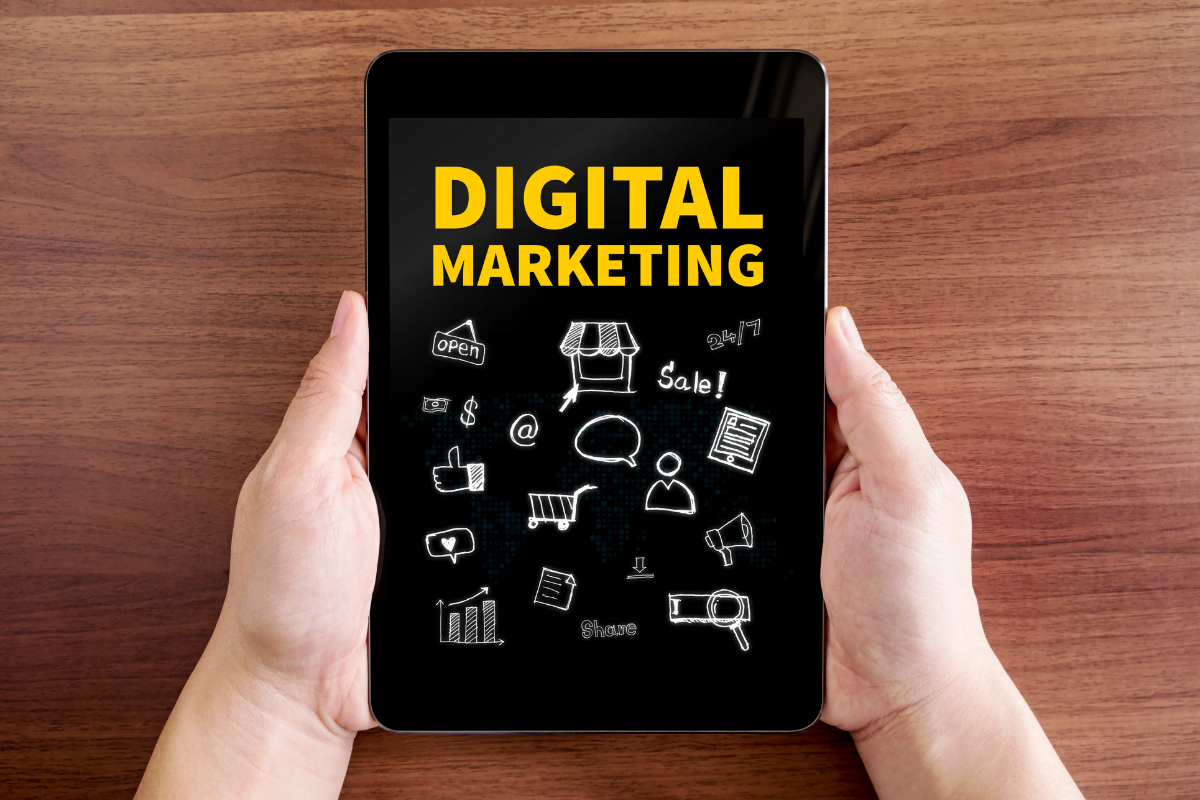Social media has been transforming businesses for years. It’s not just a place for selfies and cat videos. It’s where your customers hang out, share their lives, and discover new brands. Your brand!
Did you know that 90% of marketers report that social media marketing has boosted their business’s visibility? Let’s make sure your business is part of that success story!
In this post, we’ll show you how to harness the power of social media to boost your brand’s success. From choosing the right platforms to creating engaging content and using analytics, we’ve got you covered.
Learn How to Use Social Media for Business
Choosing the Right Social Media Platforms
There are many social media platforms, but here are a few you should know about. Each platform has its unique strengths and caters to different audiences. Understanding these differences is the first step in learning how to use social media for business success.
| Platform | Strengths |
| Great for building a community and sharing a mix of content types. | |
| Perfect for visual content like photos and videos. Ideal for brands with strong visual appeal. | |
| Twitter | Best for real-time updates, news, and engaging in conversations. |
| LinkedIn | The go-to platform for B2B marketing and professional networking. |
| TikTok | Fantastic for short, engaging videos, especially if you want to reach a younger audience. |
| Excellent for sharing ideas and inspiration, particularly for lifestyle, DIY, and food brands. |
How to Determine Which Platforms Are Best for Your Business

To choose the right platforms, consider your target audience and business goals. Here’s how:
- Know Your Audience: Research where your target audience spends their time online. Are they young and trendy? TikTok might be your best bet. Are they professionals? LinkedIn is the way to go.
- Set Clear Goals: What do you want to achieve? Brand awareness, engagement, or sales? Different platforms excel at different things.
- Analyze Competitors: See where your competitors are active and how they engage with their audience. This can give you insights into where you should focus your efforts.
Setting Clear Goals and Objectives

Having clear, measurable goals for your social media efforts is crucial. Goals give you direction and help you stay focused.
They also allow you to measure your success and adjust your strategies as needed. Without clear goals, it’s easy to get lost in the noise of social media and waste time on activities that don’t contribute to your business growth.
Examples of Common Social Media Goals
Here are some common social media goals that businesses often aim for:
- Increasing Followers: Growing your follower count helps expand your reach and potential customer base.
- Driving Website Traffic: Getting more visitors to your website can lead to increased sales and engagement with your content.
- Boosting Sales: Using social media to promote products and services can directly impact your revenue.
- Enhancing Brand Awareness: Making more people aware of your brand can help build trust and recognition.
- Improving Customer Engagement: Interacting with your audience can create a loyal customer base and improve customer satisfaction.
How to Set SMART Goals
Setting SMART goals ensures that your objectives are clear and achievable. Here’s how to set them:
- Specific: Define your goal clearly. What exactly do you want to achieve? For example, “Increase Instagram followers by 20%.”
- Measurable: Make sure you can track your progress. Use metrics like follower count, website traffic, or sales numbers.
- Achievable: Set realistic goals that are within your reach. Consider your current resources and constraints.
- Relevant: Align your goals with your overall business objectives. Make sure they matter to your business’s success.
- Time-bound: Set a deadline for achieving your goal. This helps you stay focused and motivated. For example, “Increase Instagram followers by 20% in the next three months.”
By setting SMART goals, you can create a roadmap for your social media efforts and measure your progress effectively. This will help you stay on track and achieve meaningful results for your business.
Creating Engaging Content

When we talk about how to use social media for business, we can’t leave out content creation. Content creation is crucial as it drives engagement by keeping audiences interested and interacting with your brand. It increases brand visibility, builds relationships, and establishes authority by providing valuable information and showcasing your brand’s personality.
Additionally, content creation drives traffic to your website, helps you stay relevant in your industry, and contributes to improving your search engine optimization efforts.
Several types of content can capture your audience’s attention and drive engagement:
- Images: Visual content is highly effective in grabbing attention. Use high-quality images that resonate with your brand and audience.
- Videos: Short, informative, and entertaining videos are popular across platforms. Experiment with different video formats like tutorials, behind-the-scenes, and testimonials.
- Stories: Platforms like Instagram and Facebook offer story features. Use stories to share daily updates, promotions, and interactive polls.
- Infographics: Infographics are great for presenting complex information in a visually appealing way. Use them to educate your audience and showcase data.
- Live Streams: Live streaming allows real-time interaction with your audience. Host Q&A sessions, product launches, or live events to engage viewers.
Tips for Creating High-Quality, Engaging Content
Here are some tips to help you create content for social media that resonates with your audience:
- Know Your Audience: Understand what your audience likes and tailor your content to their preferences.
- Tell a Story: Use storytelling techniques to make your content more compelling and relatable.
- Be Authentic: Show the human side of your brand. Share behind-the-scenes glimpses, customer testimonials, and employee stories.
- Use Visuals: Incorporate eye-catching visuals like graphics, animations, and memes to enhance engagement.
- Ask for Engagement: Encourage your audience to like, comment, share, and tag others in your posts. Use interactive elements like polls, quizzes, and contests.
- Provide Value: Offer valuable and actionable content that solves problems, educates, or entertains your audience.
Don’t Forget Your Hashtags, Tags, and Geotags
Hashtags, tags, and geotags play a crucial role in increasing your content’s reach and visibility:
- Hashtags: Use relevant hashtags to categorize your content and make it discoverable to users interested in those topics.
- Tags: Tagging relevant users, brands, or influencers can increase engagement and encourage sharing.
- Geotags: Adding location tags can help you target local audiences and improve your content’s relevance.
By creating diverse, engaging content and leveraging hashtags, tags, and geotags strategically, you can boost your social media presence and foster meaningful connections with your audience.
Leveraging Paid Advertising on Social Media

Paid ads can be highly effective when strategically used to expand reach, target specific audiences, and achieve marketing objectives, but it’s essential to approach them with a well-thought-out plan and ongoing optimization efforts.
Pros of Paid Ads for Social Media:
- Increased Reach: Paid ads allow you to reach a wider audience beyond your organic reach, increasing brand visibility.
- Targeted Advertising: You can target specific demographics, interests, behaviors, and locations, ensuring your ads reach the right audience.
- Goal-Oriented: Paid ads can be customized to achieve specific goals such as brand awareness, lead generation, website traffic, or conversions.
- Measurable Results: You can track and measure the performance of your ads using analytics tools, allowing you to optimize campaigns for better results.
- Cost-Effective: Compared to traditional advertising, social media ads can be more cost-effective, especially when targeting niche audiences.
- Flexibility: You have flexibility in terms of ad formats, placements, budgets, and scheduling, allowing for customization based on your needs.
Cons of Paid Ads for Social Media:
- Costs: While social media ads can be cost-effective, they still require a budget. Costs can vary based on factors like audience targeting, ad placement, and competition.
- Competition: With the popularity of social media advertising, competition for ad space can be intense, especially in certain industries.
- Ad Fatigue: Users may become fatigued or annoyed with repetitive or irrelevant ads, leading to decreased engagement.
- Learning Curve: Managing paid ads effectively requires knowledge of advertising platforms, targeting options, ad formats, and optimization techniques, which can have a learning curve.
- Ad Blocking: Some users may use ad-blocking software, reducing the visibility of your ads to certain audiences.
- ROI Challenges: Achieving a positive return on investment (ROI) can be challenging, especially if ads are not optimized or targeting the right audience.
Harness the Power of Social Media to Grow Your Business
We’ve covered essential strategies and tips for leveraging social media for business success. These key points form the foundation for a successful social media strategy that can drive brand awareness, engagement, and conversions.
Ready to take your social media presence to the next level? Look no further than Newman Web Solutions, your trusted partner for social media marketing in Atlanta. Our tailored strategies are designed to boost brand awareness, drive traffic, and increase conversions.
Let our expert team craft unique content, engage your audience, and maximize your social media ROI. Contact us today at (404) 301-9189 or schedule a strategy session to start your journey towards social media success!





